Disclosure: Please note that some links are affiliate links, and at no additional cost to you, we earn a commission if you make a purchase.
If you would like to support this website in some way, using these links will help do exactly that.
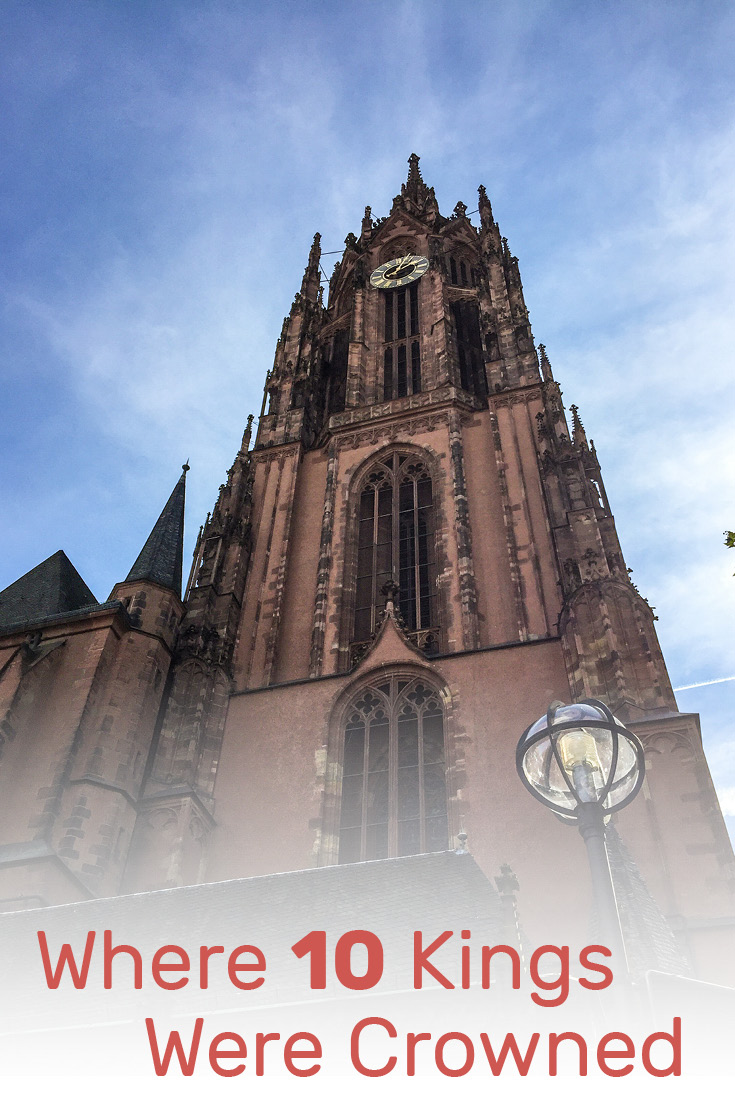
Not just a parish church, St. Bartholomew's Cathedral in Frankfurt am Main is unique with it's honorific designation as Cathedral. Between 1356 and 1792 it was center stage for initially electing the kings of the Holy Roman Empire of the German Nation, then ultimately where kings were crowned as well, ten kings in total.
This spot in Frankfurt has gone through at least five religious structures, dating back as early as 680 AD to its original Merovingian Chapel form.
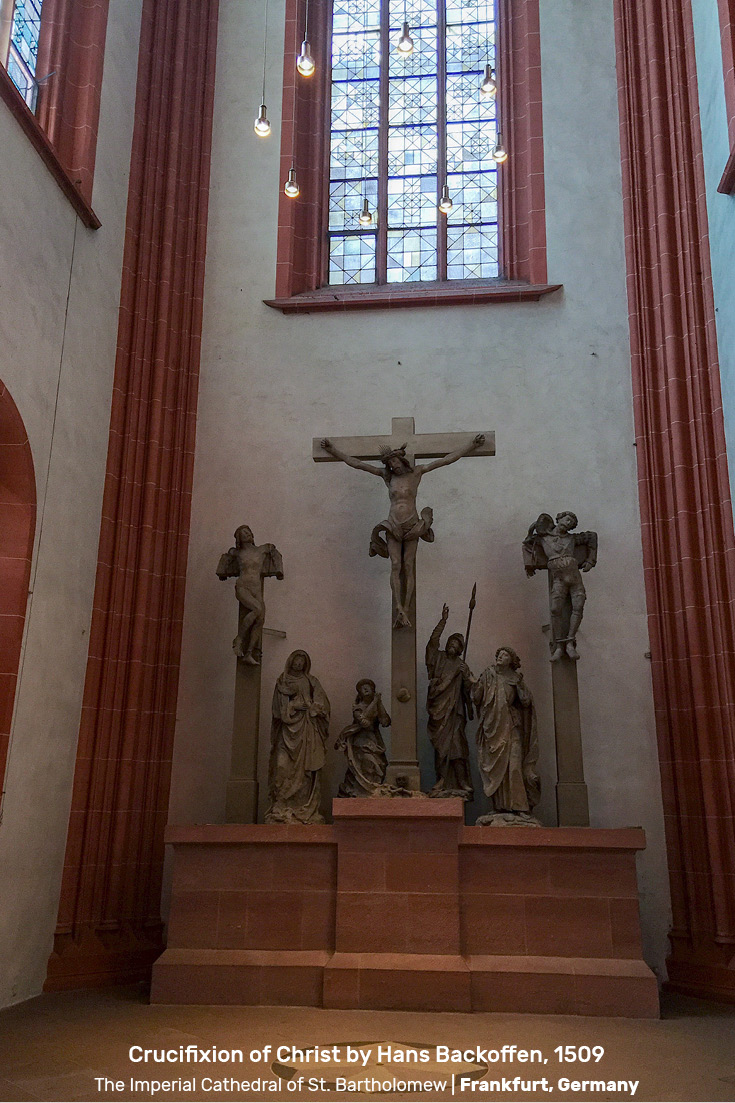
During reconstruction from the 1867 fire, the original 1415 plans by Madern Gerthener for a gothic spire atop the tower was finally brought to life. This Neo-Gothic tower is romantic and is a jewel on Frankfurt’s crown of a skyline. Nestled into the old part, you turn a street corner and it's a surprise.
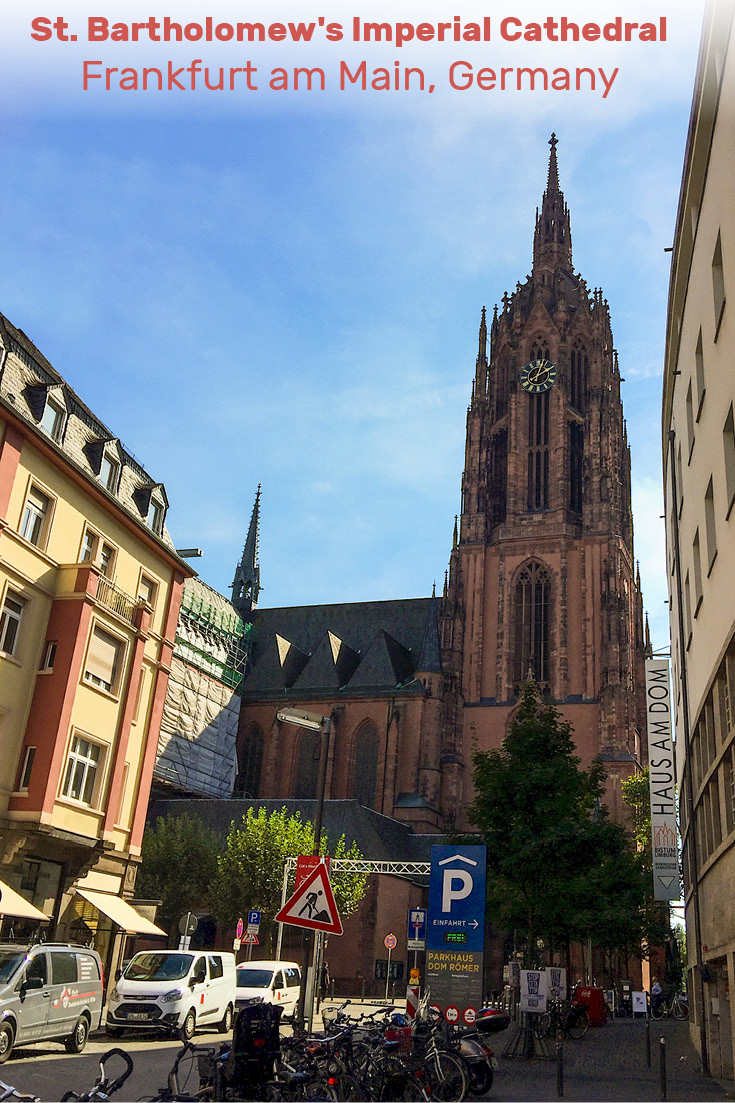
Utilizing the nearby local red sandstone, which can be admired throughout the city of Frankfurt, after being restored in 1992-1994 the visual effect inside and out is unforgettable.
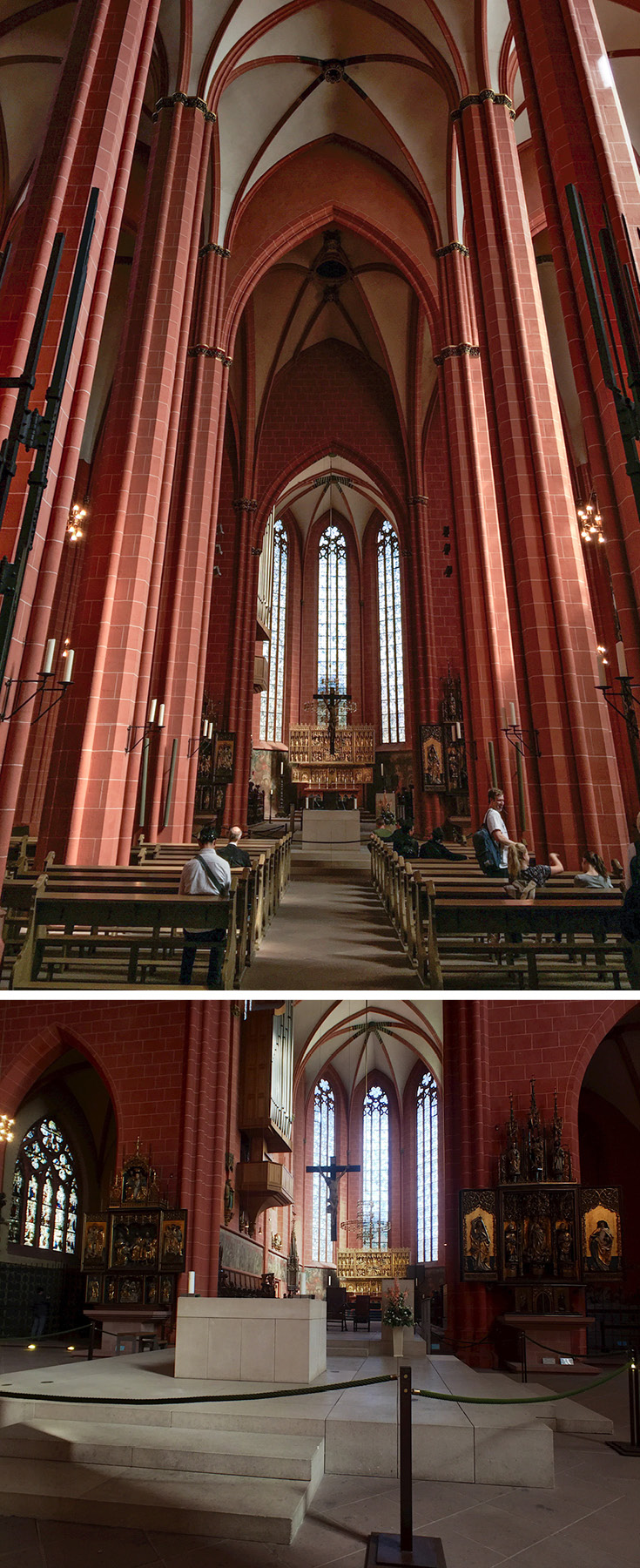
Art Imitating Art
When I first saw the organ in the southern transept it reminded me of Caspar David Friedrich's painting, The Sea of Ice. Do you see it too?
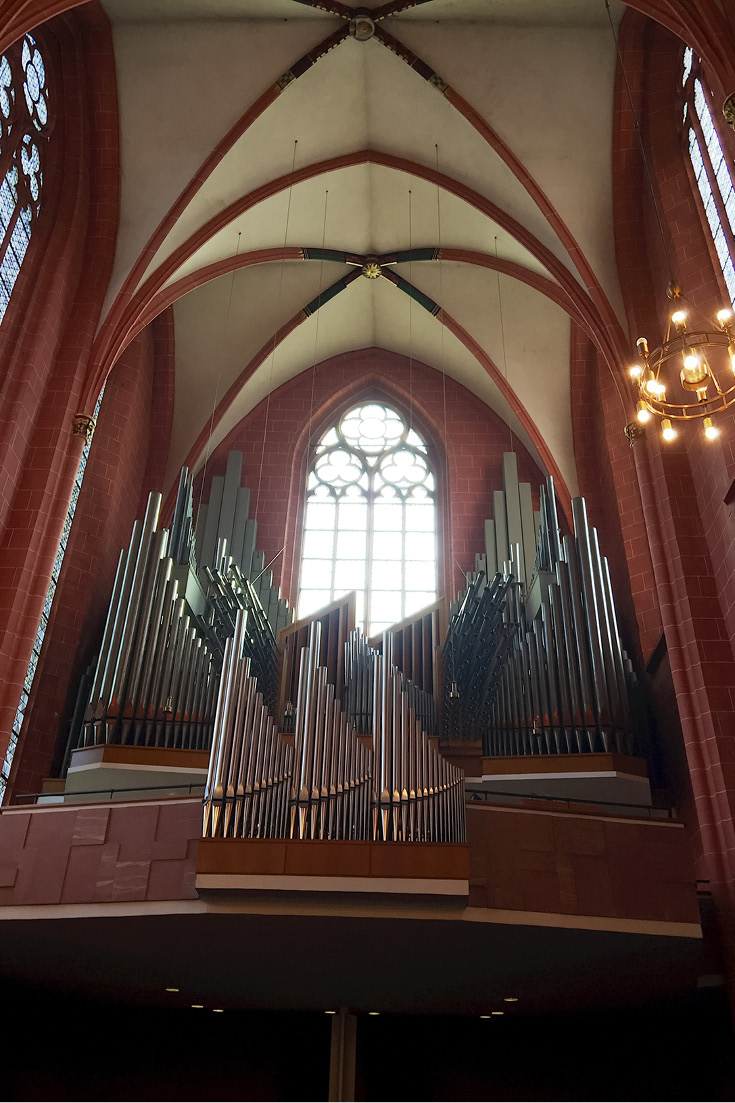
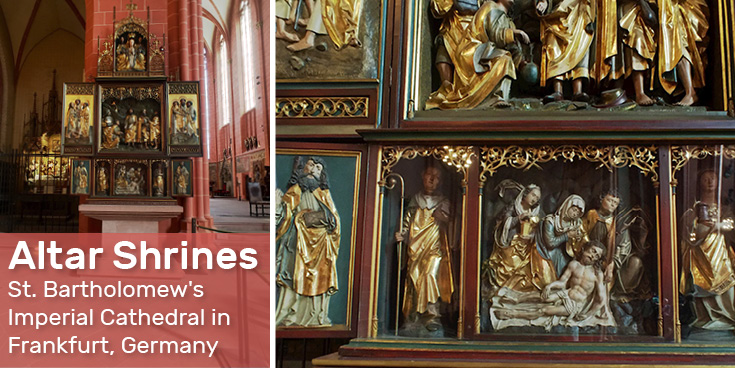
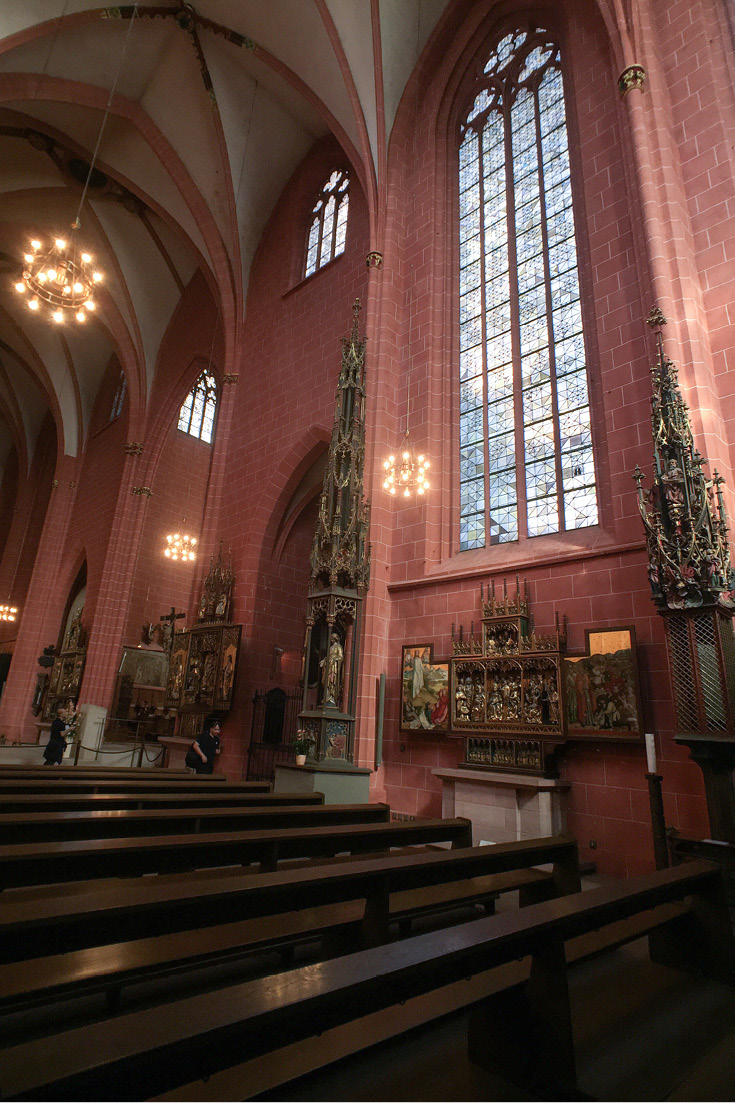
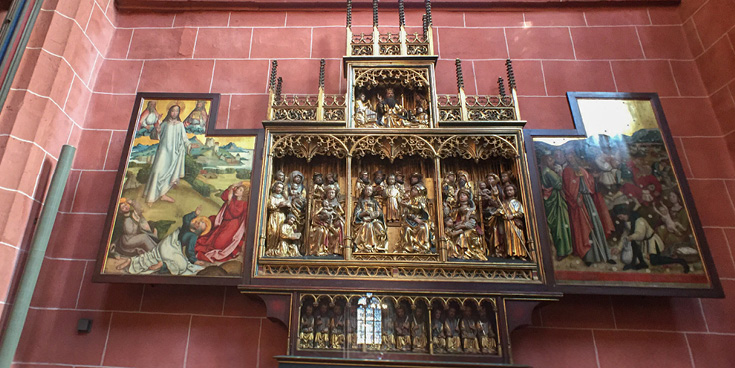
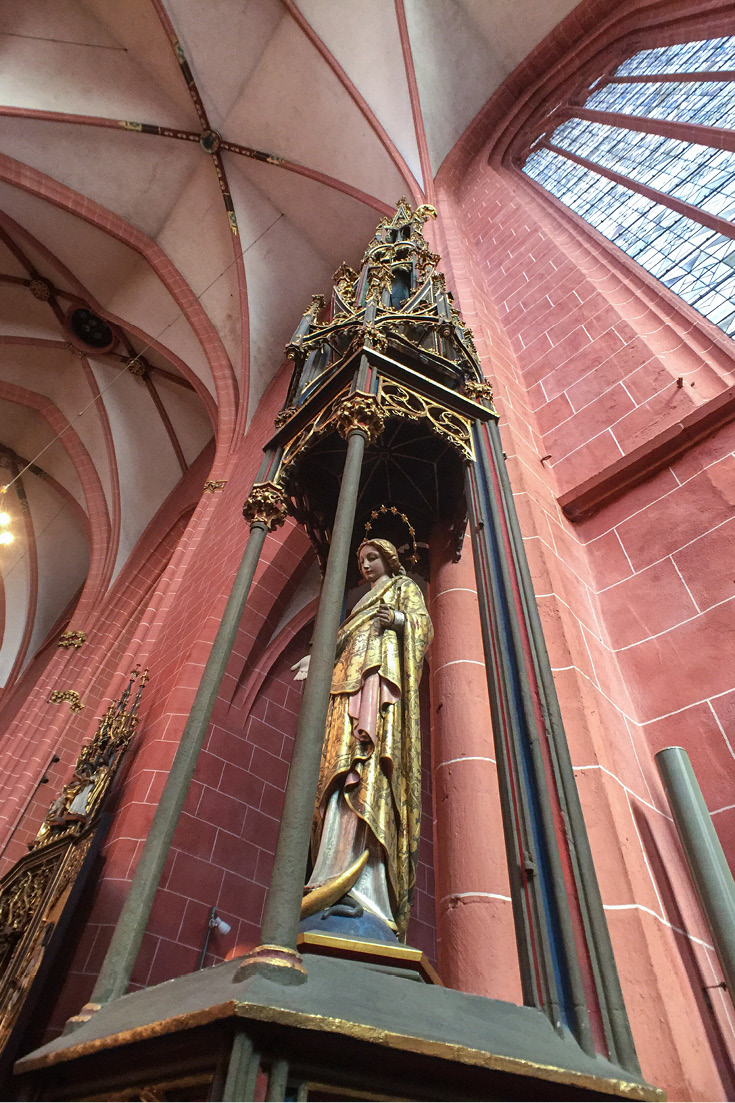
St. Mary's Chapel
And if you weren't blown away by the altar shrines, in St. Mary's Chapel, an intimate little alcove, you'll find this mammoth-sized stone-carved depiction of the Death of the Virgin, created in 1434-1438. Carved in stone! Its stunning.
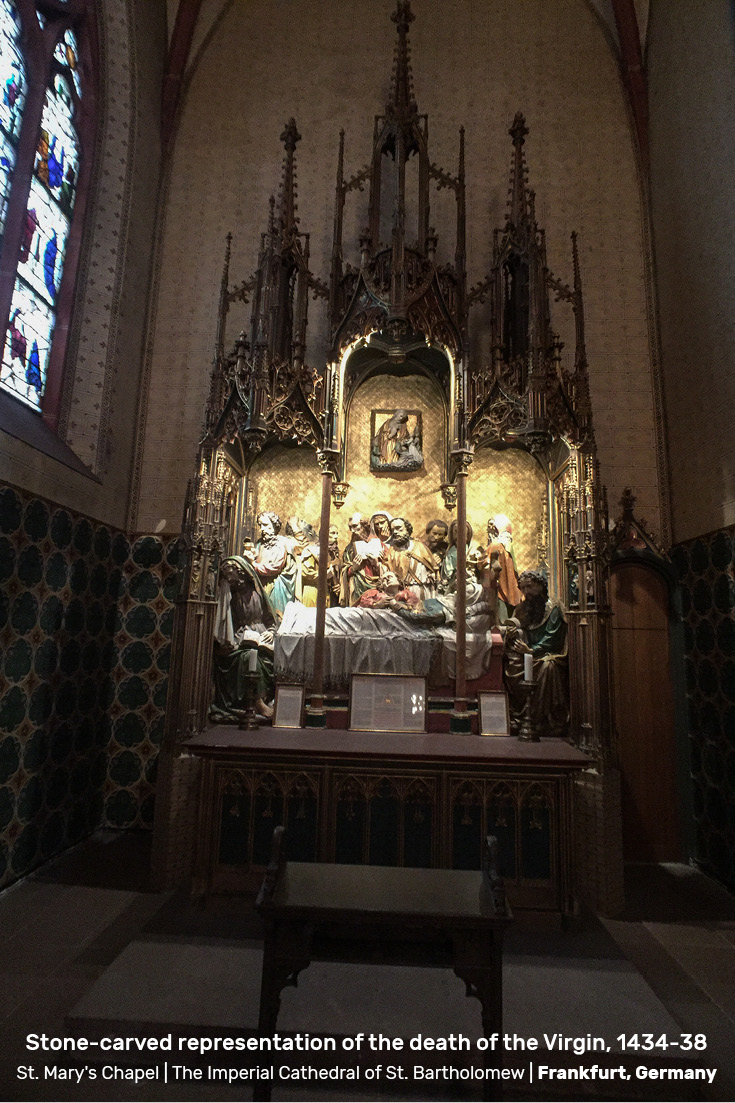
Generosity of Frankfurt's Citizens
One wall in the northern transept seemed to have an unusual arrangement of items on the wall. A very ornately framed "Lamentation of Christ," by Anthony van Dyck and several stone monuments. This section of the cathedral is a testament to the generosity of the Frankfurt citizens. Since this cathedral isn't a typical cathedral where a Bishop ruled and could install works of artwork to fill the walls, this cathedral reaped the generosity of its own every day citizens, making it a true Cathedral of the people.
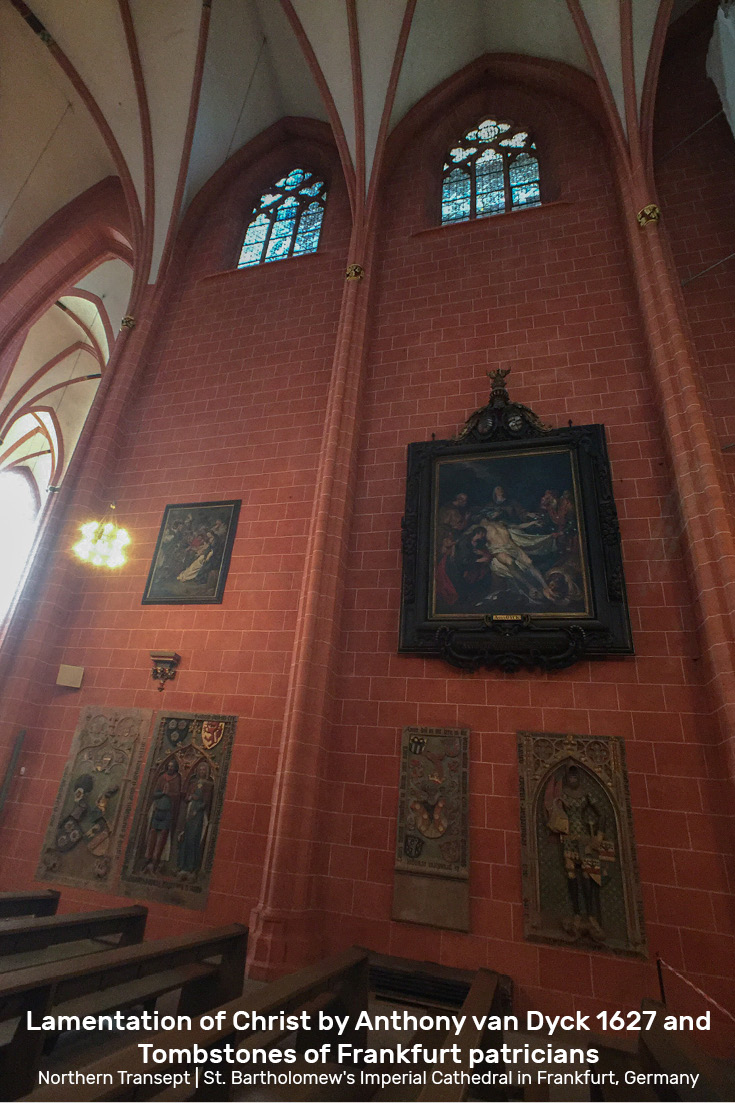
Follow Along
If you enjoyed this article, or these topics sound interesting to you, you'll love our weekly newsletter. You'll receive a free Germany Packing list for signing up, and you'll receive each week's newest posts every Friday. Thank you for reading!

While we were climbing to the top of every aviation and boat exhibit we were allowed in the Technik Museum of Speyer, we could see the Cathedral waiting patiently, a jewel box on the horizon. It certainly built the anticipation. The museum and the cathedral are close enough, and Germany is in general pedestrian-friendly enough, that it was an easy, safe walk from one to the other. One weird intersection with crosswalks and a street until you’re in the larger park leading to the cathedral.
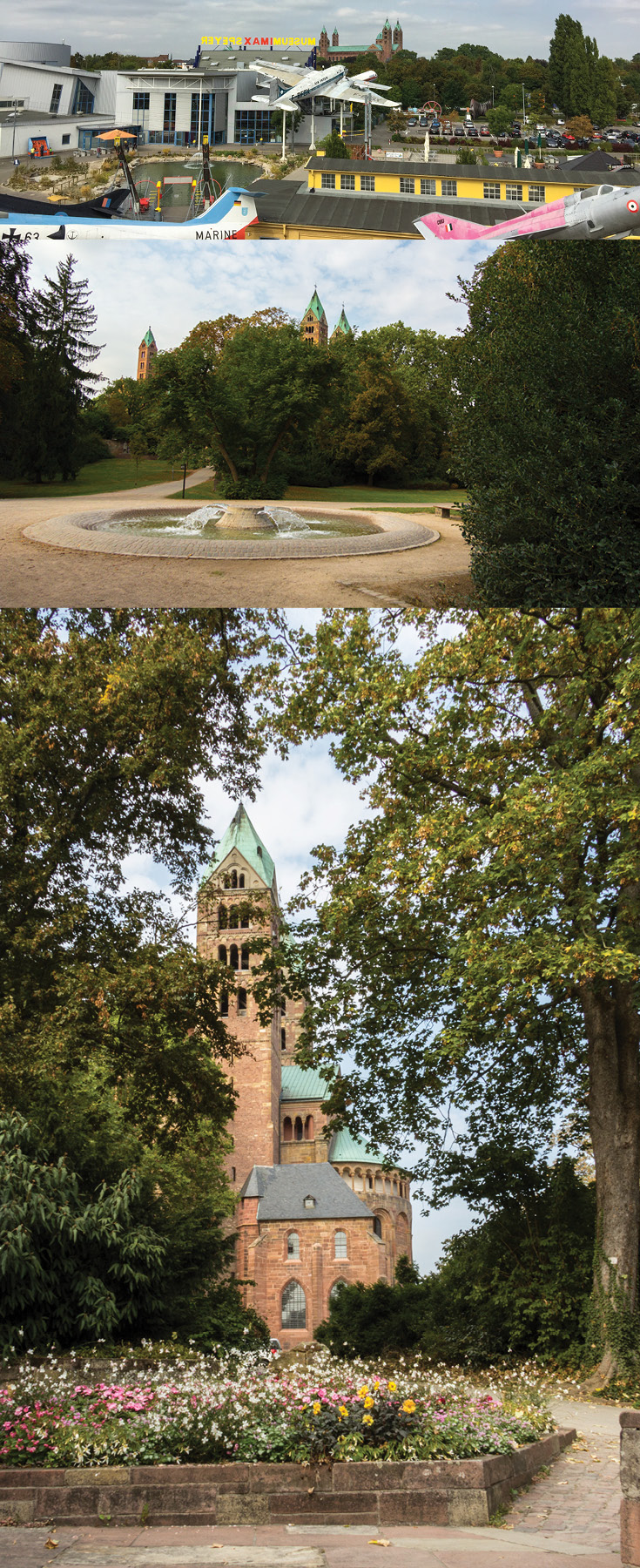
Largest Romanesque Architecture
You could describe this cathedral as so many firsts, largest, best. Being a part of the UNESCO World Heritage List tends to suggest as much. Speyer Cathedral, or Imperial Cathedral of Speyer, Kaiserdom zu Speyer, is the largest example of Romanesque Architecture in the World, the first building constructed entirely from stone in Europe, the first to have an exterior gallery and system of arcades around the entire building, a pilgrimage site, the resting place of 8 Kings and Emperors, and was the biggest church in the western hemisphere at the time of it's completion in 1106. Phew! To say this is a very important building feels like an understatement.
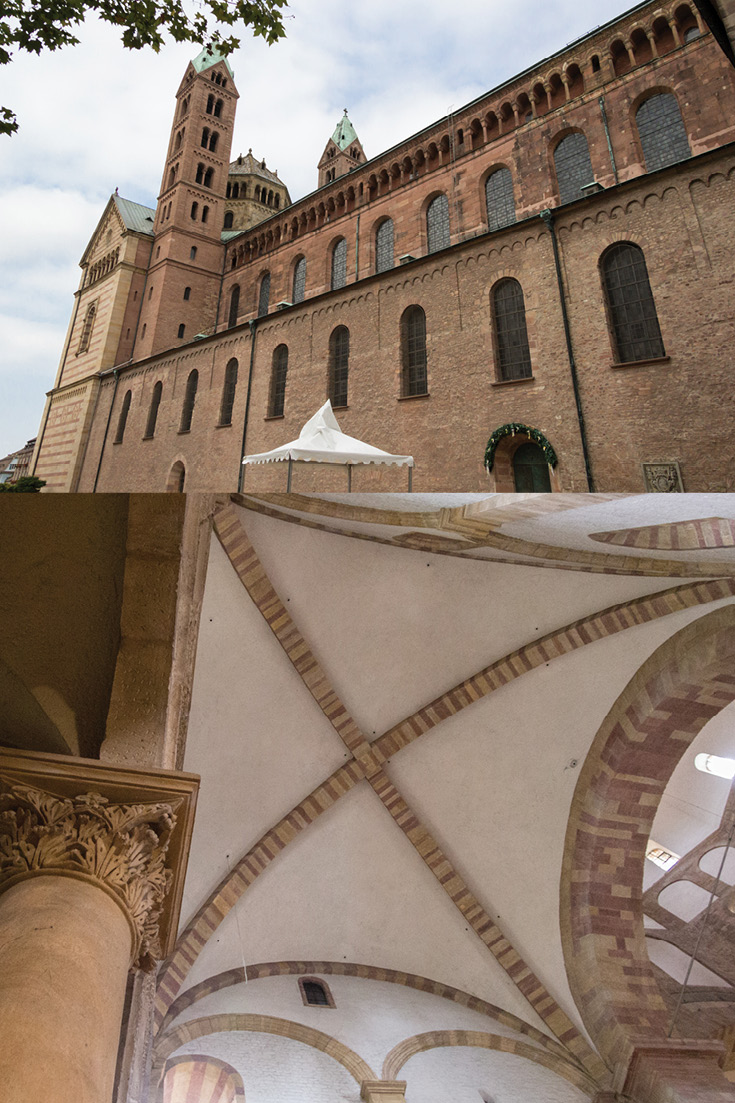
But, how does it make you feel? Personally, it was a calming, solemn, space. Not in anyway creepy as some older European churches are. With minimal ornamentation and varying natural colors shining purely from the carefully placed red sandstone from the nearby Palatine Forest Mountains, this cathedral is the most naturally beautiful church I’ve seen. I have to wonder if the architect Antoni Gaudi hadn’t once visited the Speyer Cathedral? The smooth, soaring semi-circular columns offers the same feeling of being in a quiet forest, just as I had felt in Gaudi’s Sagrada Familia in Barcelona, Spain.
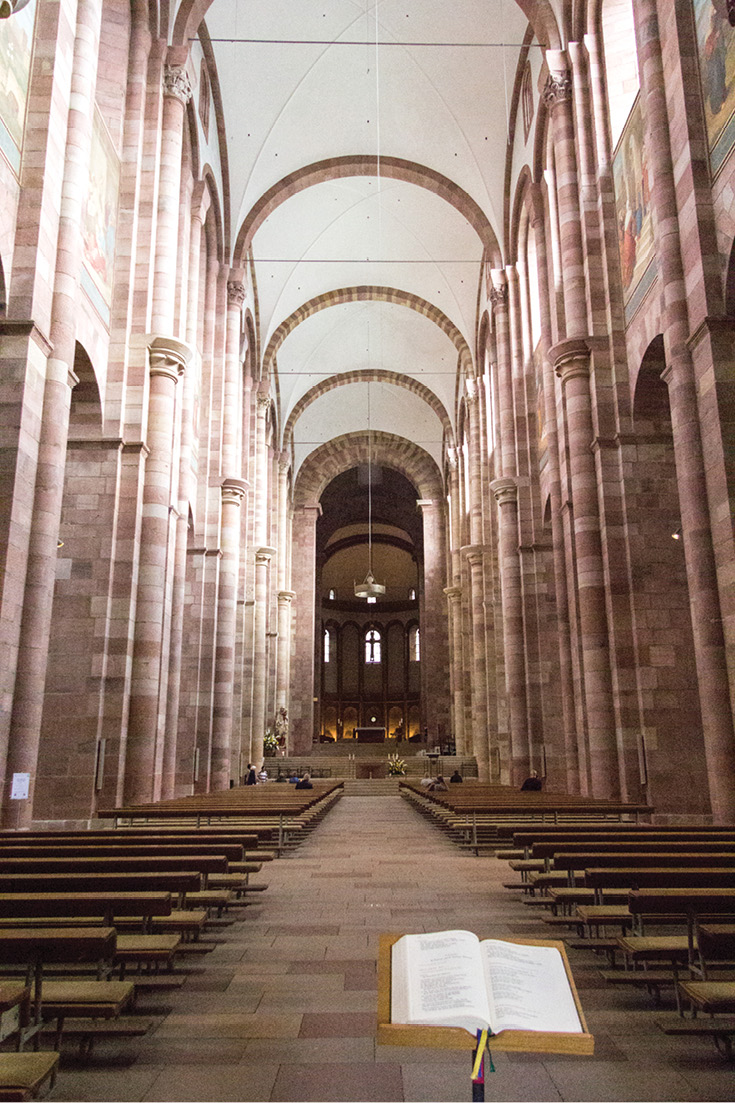
An Image Worthy of a Pilgrimage
A delicate, carefully painted standing Madonna statue quietly demands your attention at the front of the nave with fresh flowers at her feet and candles lit before her. This image, sculpted by German sculptor August Weckbecker, consecrated by Pius XI in Rome, was brought into the Speyer Cathedral in 1930. In doing so, the pilgrimage history for the Speyer Cathedral gained a new chapter to a centuries-long legacy.
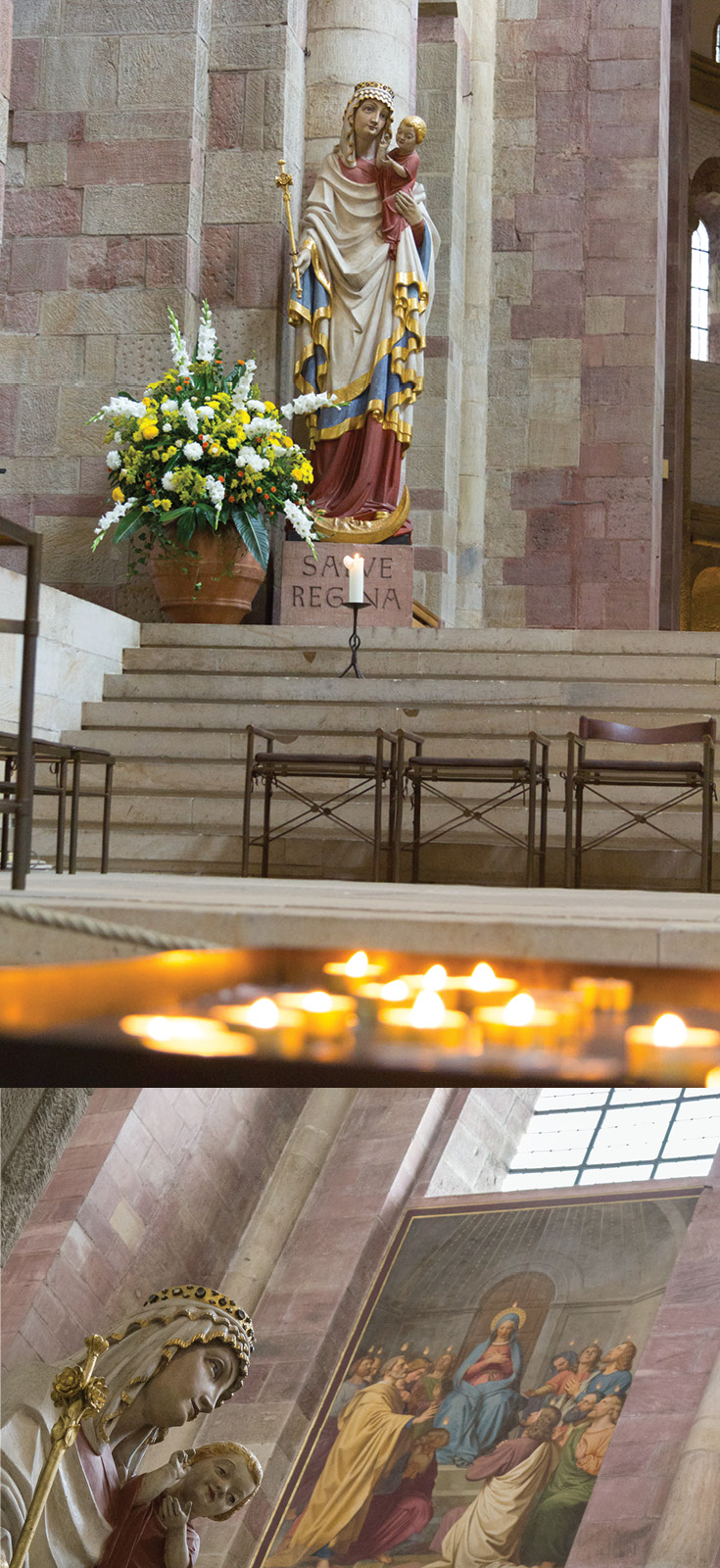
Also in honor of the cathedral's patron saint, the Blessed Mother Mary, along the walls of the nave is a 24-part series depicting Mary’s story painted by Johann von Schraudolph in the mid 1800s. These frescoes were part of an even larger installment and collaboration with Joseph Schwarzmann that was unfortunately removed in the 1960s in an attempt to make the cathedral appear more ‘romanesque.’ Some of the frescoes that were removed have been restored and are now in a new display in the Emperor's Hall of the Cathedral.
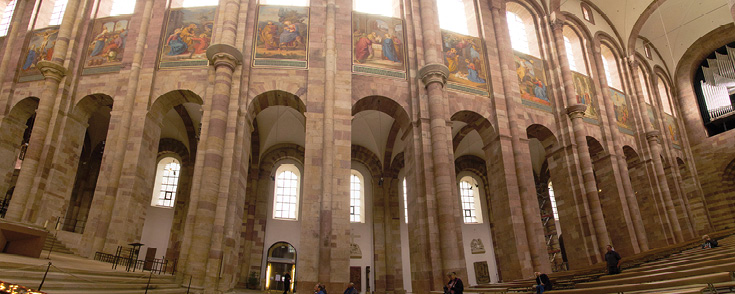
The Mount of Olives
Beside the Cathedral in a leafy clearing, you discover the sculpture ‘The Mount of Olives’, once part of the cloister grounds that were destroyed in the fire of 1689. What survived from Hans Syfer’s original piece was incorporated into the present day replacement by Speyer sculptor Gottfried Renn in 1856. A roof was built above the statue to prevent further wear and tear. Not sure why the roof has a rooster on top. Puzzling, but charming.
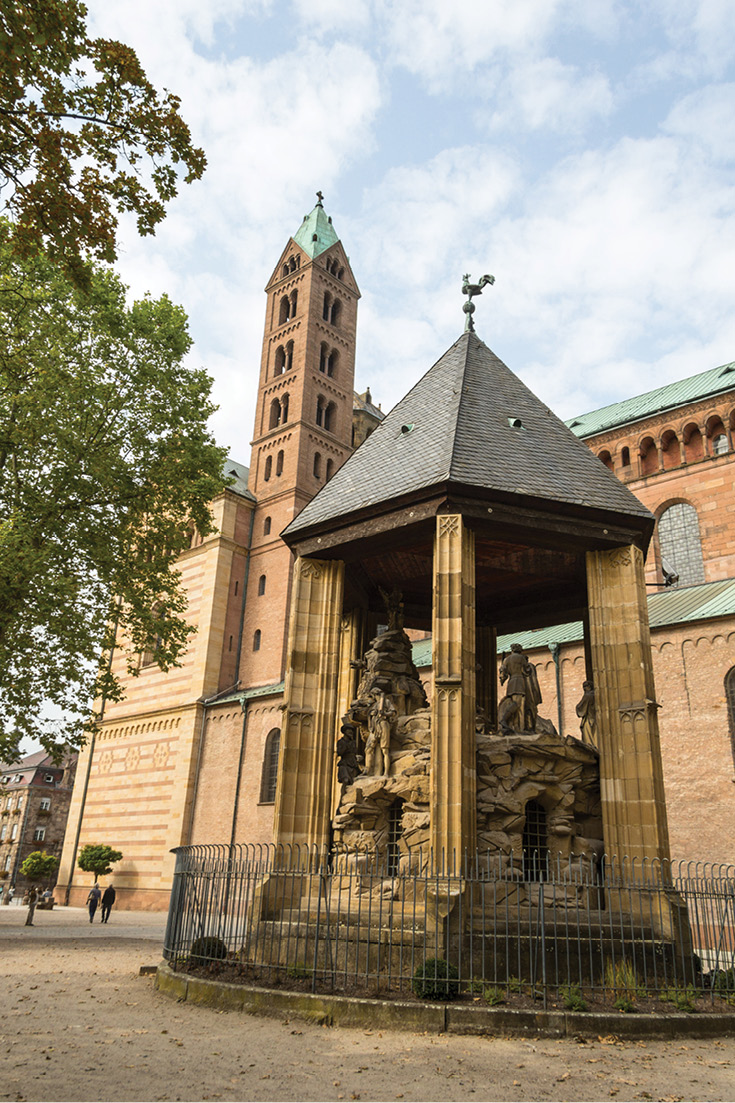
Speyer Cathedral Bowl
Outside the western entrance of the Speyer Cathedral stands the Cathedral Bowl. Many, many years ago it was often used as a loophole for those hoping to escape prison sentences, as the bowl marks the separate bishop and city territories. Prisoners would make a run for the bowl in order to be out of the city's jurisdictional area, now being protected by the church. And historically, to welcome a new bishop, the bowl was filled with wine for the citizens to freely enjoy.
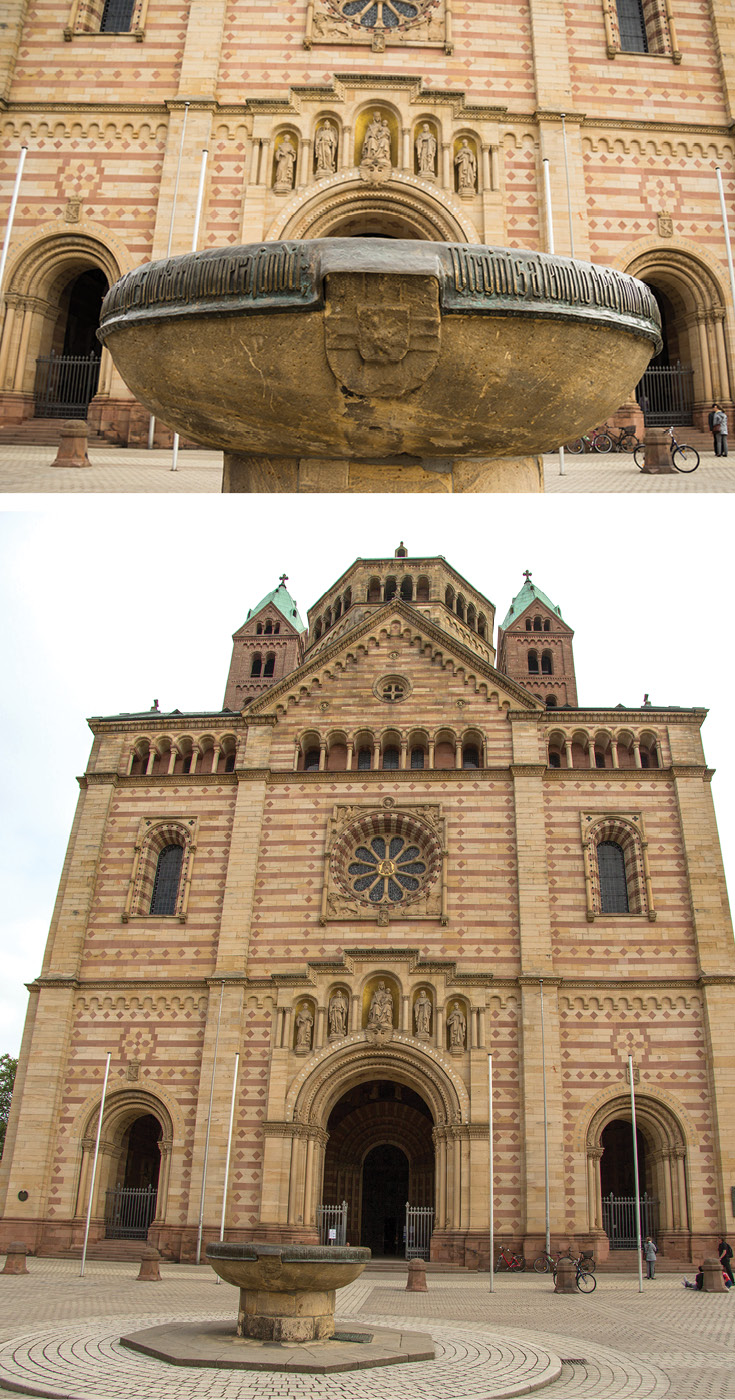
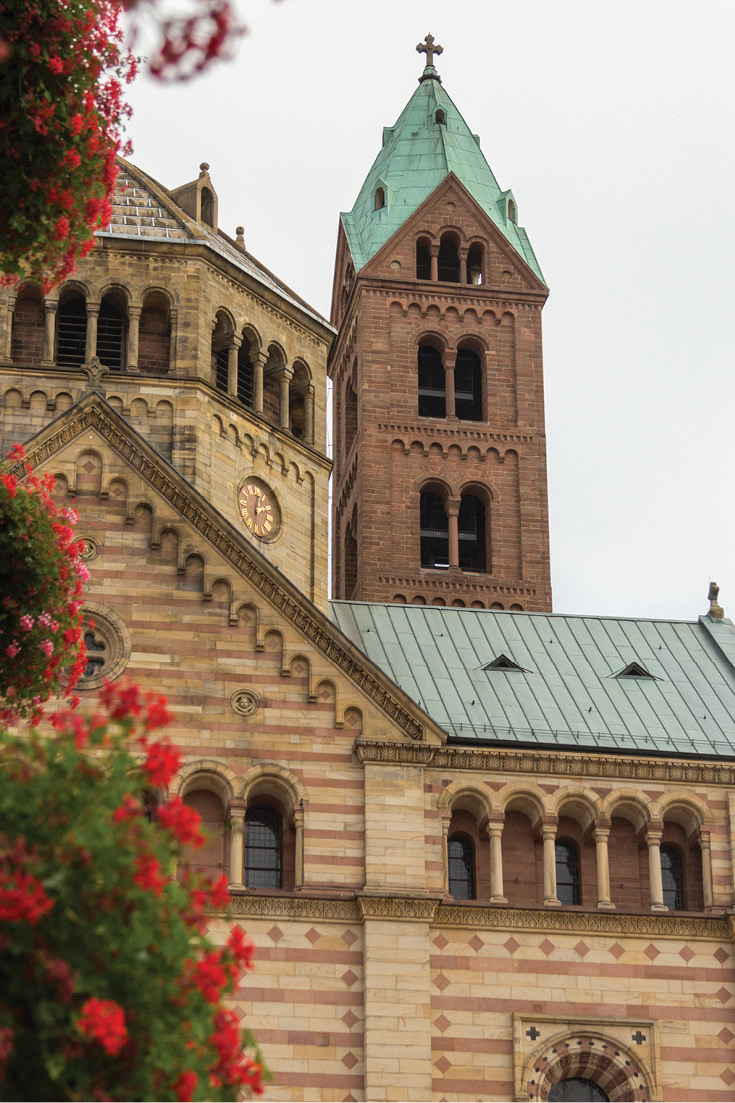
Follow Along
If you enjoyed this article, or these topics sound interesting to you, you'll love our weekly newsletter. You'll receive a free Germany Packing list for signing up, and you'll receive each week's newest posts every Friday. Thank you for reading!

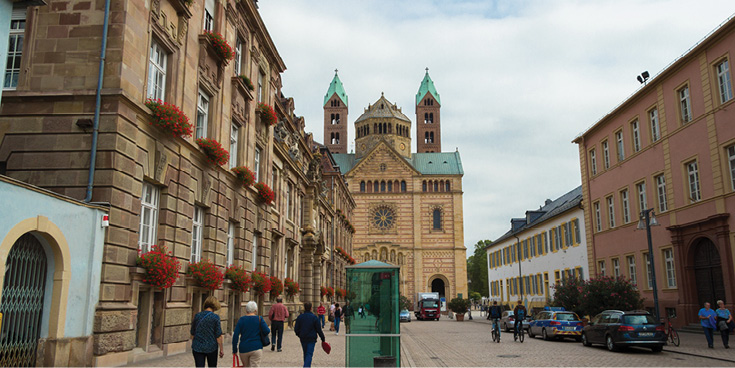
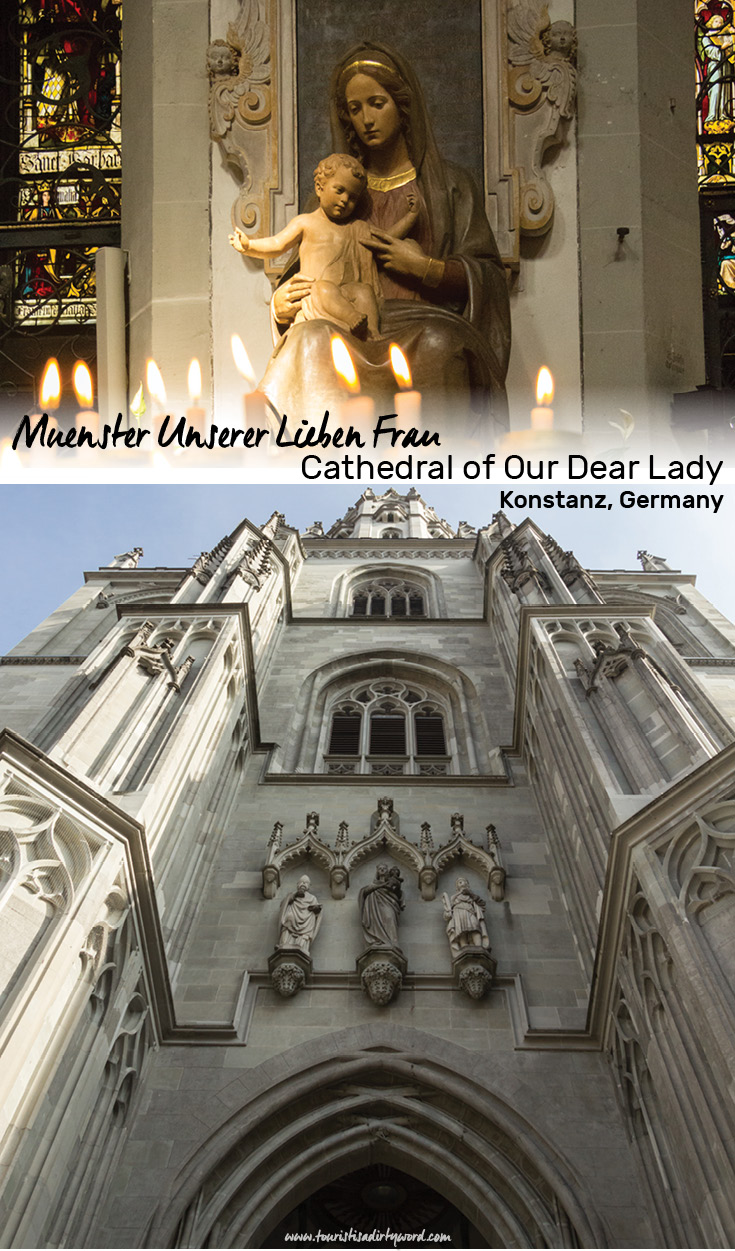
We wandered only a short distance through the old part of town before spotting the highest tower of the Cathedral, then used it as our compass. In Konstanz, Germany, we sought out the Muenster Unserer Lieben Frau, Cathedral of Our Dear Lady. We opened one of the side nave doors, and found ourselves surrounded by tracery windows, and stained glass windows with the afternoon sun shining through them. 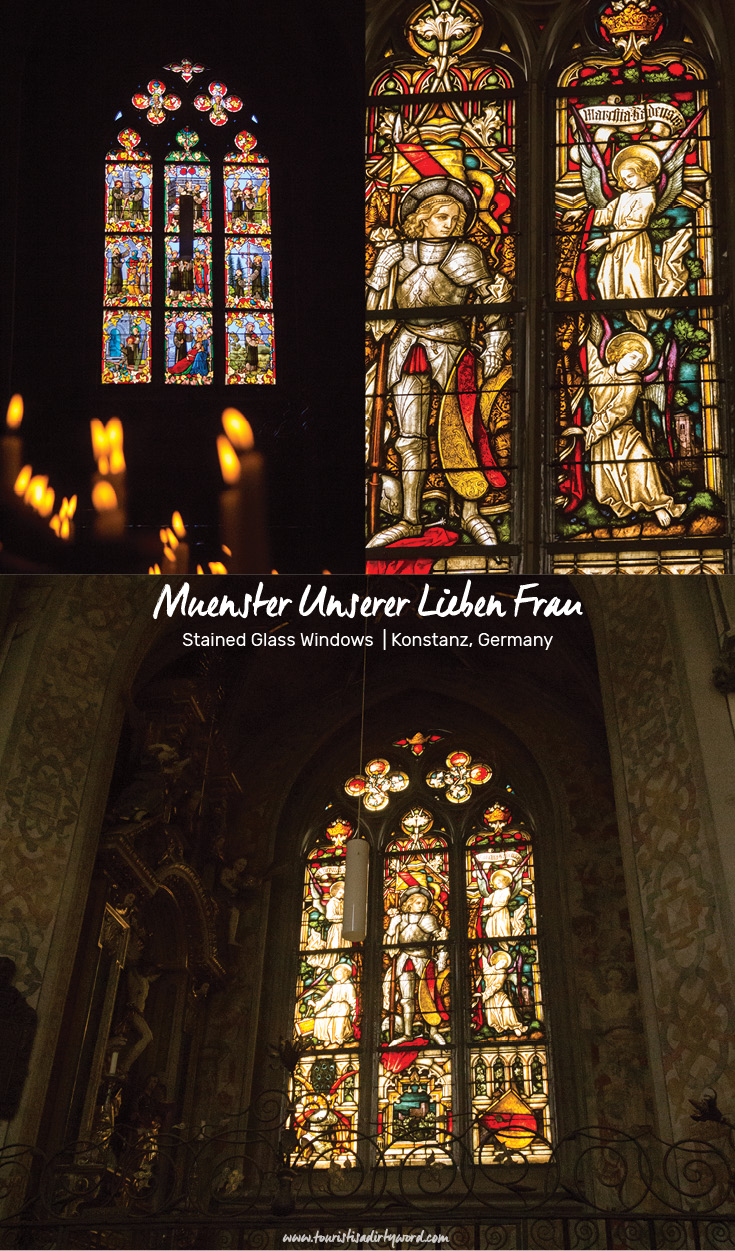
It took a moment for my eyes to adjust, and I took a deep breath. The interior of the cathedral is brighter than I expected, and with almost all church/castle/cathedral/palace.. your eyes tend to wander up. The original Romanesque painted wood ceilings are long gone, but the whitewashed, plastered ribbed vault ceiling is pretty, and does make the Cathedral bright and spacious.
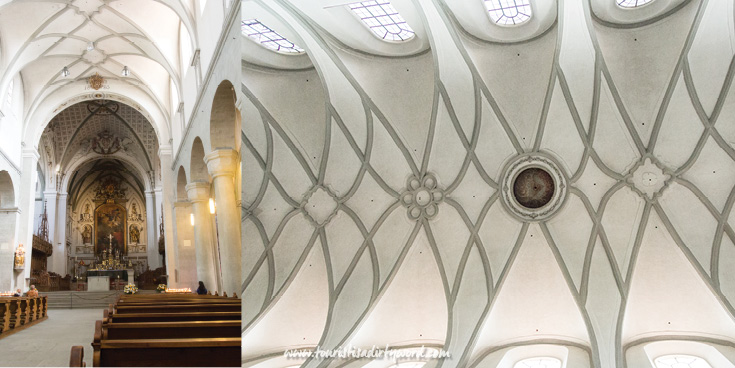
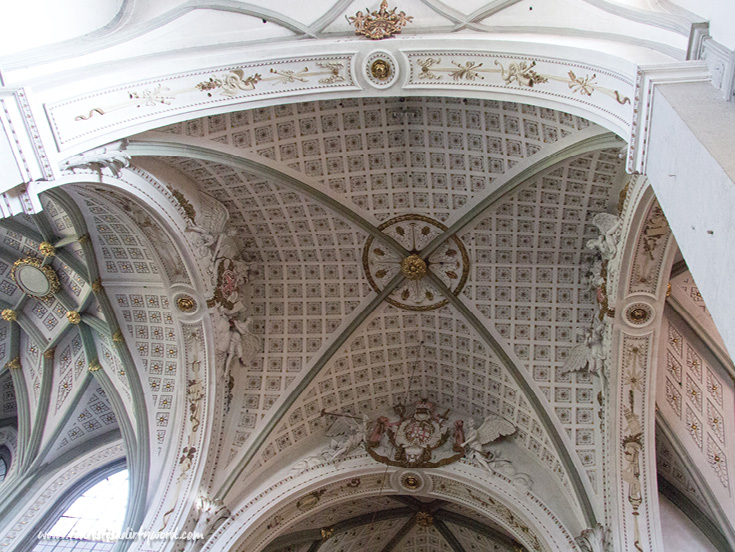
Don't Miss This-
Allow a healthy hour to explore the whole cathedral. There are truly details everywhere, even the crypt. Don't let the word 'crypt' scare you. It felt more like a basement or a cellar, and while it did have low-sloped ceilings, its not cramped. If you venture down, you'll discover three copperplates, one large plate depicting Christ which dates back to the 10th century, and two smaller copper plates from the 13th century. The faceless figure in one of the smaller copper plates depicts the patron saint of Konstanz, Saint Pelagius, whose relics were held for a time in the tomb that is opposite the copperplates.
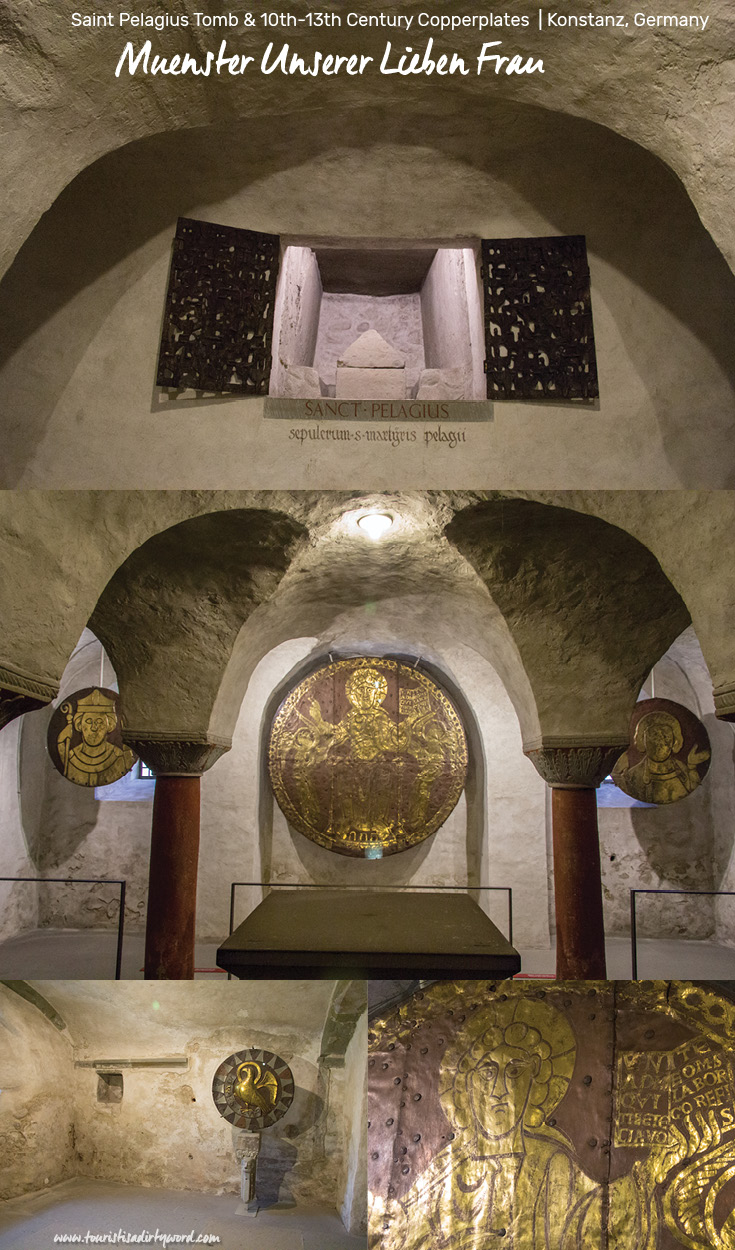
Its hard to beat stained glass windows in wow-factor, but look for the wooden spiral staircase that leads to the pulpit. If you have time, try and plan for hearing the Cathedral bells ring, which are fondly considered by some as one of the most harmonious in Germany.
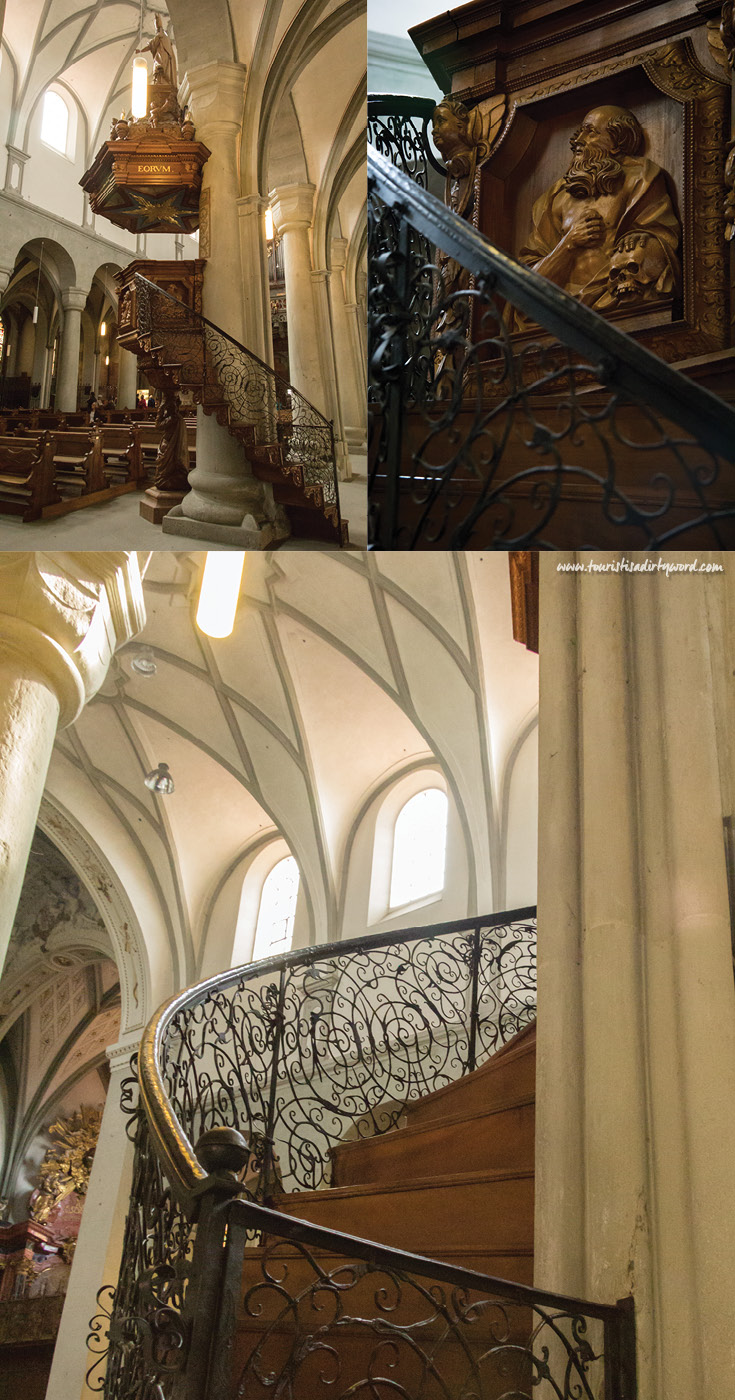
BONUS Konstanz Cathedral Architectural History, in English
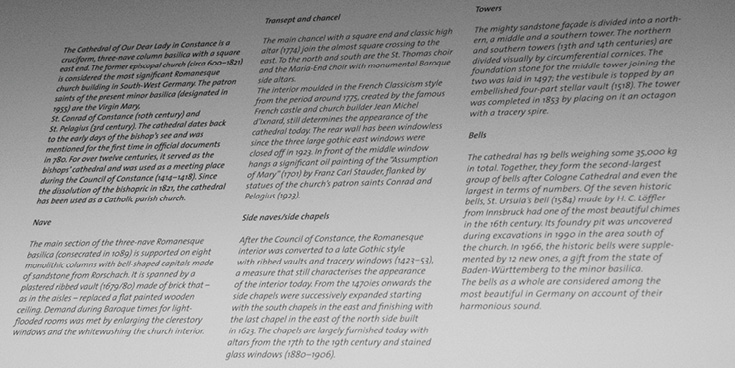
It would be a disservice to try and summarize the English synopsis of the cathedral's history that was on display in the entryway. I've looked online and I can't see it posted anywhere, so I've retyped it from a photo I took. The Wikipedia page for Muenster Unserer Lieben Frau in English is an 1/8th of the size of the page in German, so here's to bridging the language barrier in regards to this stunning building.The official website for the cathedral is completely in German as well.
"Cathedral of Our Dear Lady in Constance is a cruciform, three-nave column basilica with a square east end. The former episcopal church (circa 600-1821) is considered the most significant Romanesque church building in South-West Germany. The patron saints of the present minor basilica (designated in 1955) are the Virgin Mary, St. Conrad of Constance (10th century) and St. Pelagius (3rd century). The cathedral dates back to the early days of the bishop's see and was mentioned for the first time in official documents in 780. For over twelve centuries, it served as the bishops' cathedral and was used as a meeting place during the Council of Constance (1414-1418). Since the dissolution of the bishopric in 1821, the cathedral has been used as a Catholic parish church.
Nave
The main section of the three-nave Romanesque basilica (consecrated in 1089) is supported on eight monolithic columns with bell-shaped capitals made of sandstone from Rorschach. It is spanned by a plastered ribbed vault (1679/80) made of brick that- as in the aisles- replaced a flat painted wooden ceiling. Demand during Baroque times for light-flooded rooms was met by enlarging the clerestory windows and the whitewashing the church interior.
Transept and chancel
The main chancel with a square end and classic high altar (1774) join the almost square crossing to the east. To the north and south are the St. Thomas choir and Maria-End choir with monumental Baroque side altars. The interiors moulded in the French Classicism style from the period around 1775, created by the famous French castle and church builder Jean Michel d'Ixnard, still determines the appearance of the cathedral today. The rear wall has been windowless since the three large gothic east windows were closed off in 1923. In front of the middle window hangs a significant oil painting of the "Assumption of Mary" (1701) by Franz Carl Stauder, flanked by the statues of the church's patron saints Conrad and Pelagius (1923).
Side naves/Side chapels
After the Council of Constance, the Romanesque interior was converted to a late Gothic style with ribbed vaults and tracery windows (1423-53), a measure that still characterizes the appearance of the interior today. From the 1470s onwards the side chapels were successively expanded starting with the south chapels in the east and finishing with the last chapel in the east of the north side built in 1623. The chapels are largely furnished today with the altars from the 17th and 19th century and stained glass windows (1880-1906).
Towers
The mighty sandstone facade is divided into a northern, a middle, and a southern tower. The northern and southern towers (13th and 14th centuries) are divided visually by circumferential cornices. The foundation stone for the middle tower joining the two was laid in 1497; the vestibule is topped by an embellished four-part stellar vault (1518). The tower was completed in 1853 by placing on it an octagon with a tracery spire.
Bells
The cathedral has 19 bells weighing some 35,000 kg in total. Together, they form the second-largest group of bells after Cologne Cathedral and even the largest in terms of numbers. Of the seen historic bells, St. Ursula's bell (1584) made by the H.C. Löffler from Innsbruck had one of the most beautiful chimes in the 16th century. Its foundry pit was uncovered during excavations in 1990 in the area south of the church. In 1966, the historic bells were supplemented by 12 new ones, a gift from the state of Baden-Württenberg to the minor basilica. The bells as a whole are considered among the most beautiful in Germany on account of their harmonious sound."
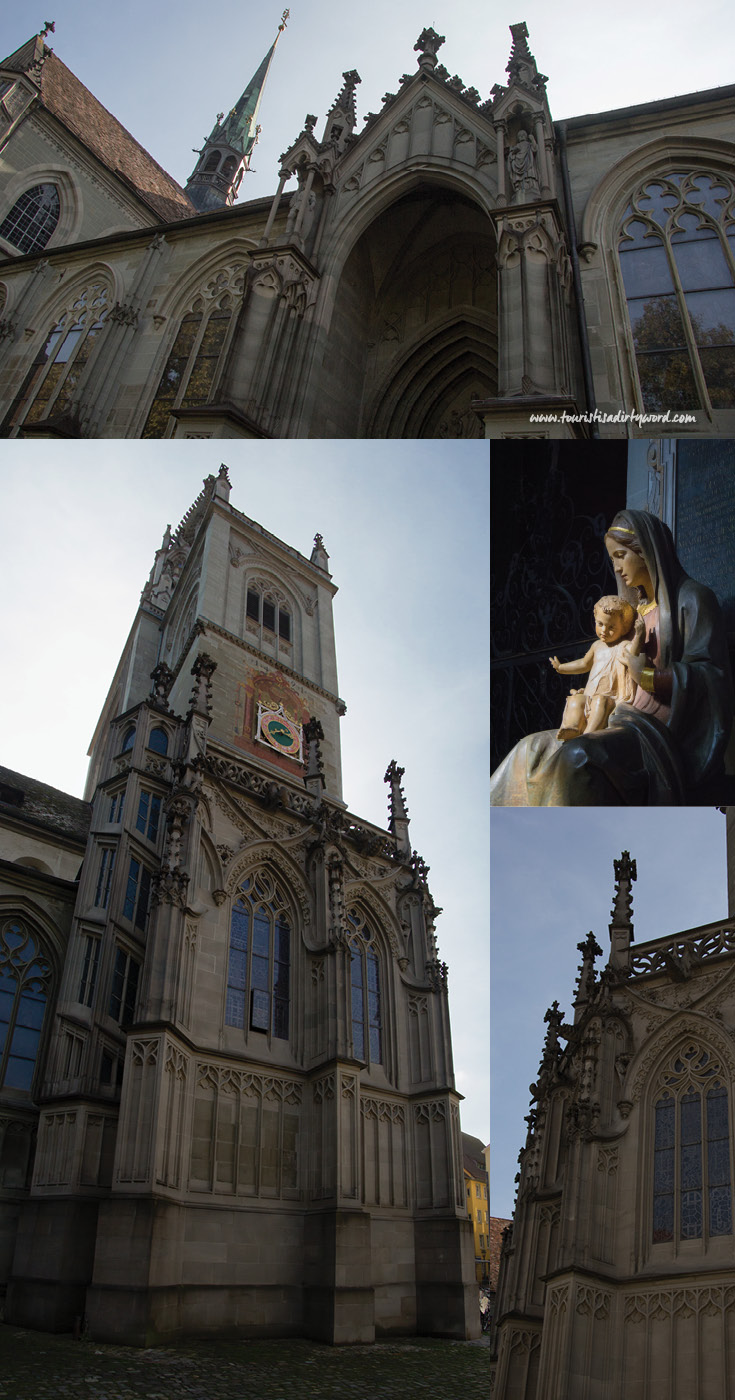
Follow Along
If you enjoyed this article, or these topics sound interesting to you, you'll love our weekly newsletter. You'll receive a free Germany Packing list for signing up, and you'll receive each week's newest posts every Friday. Thank you for reading!

